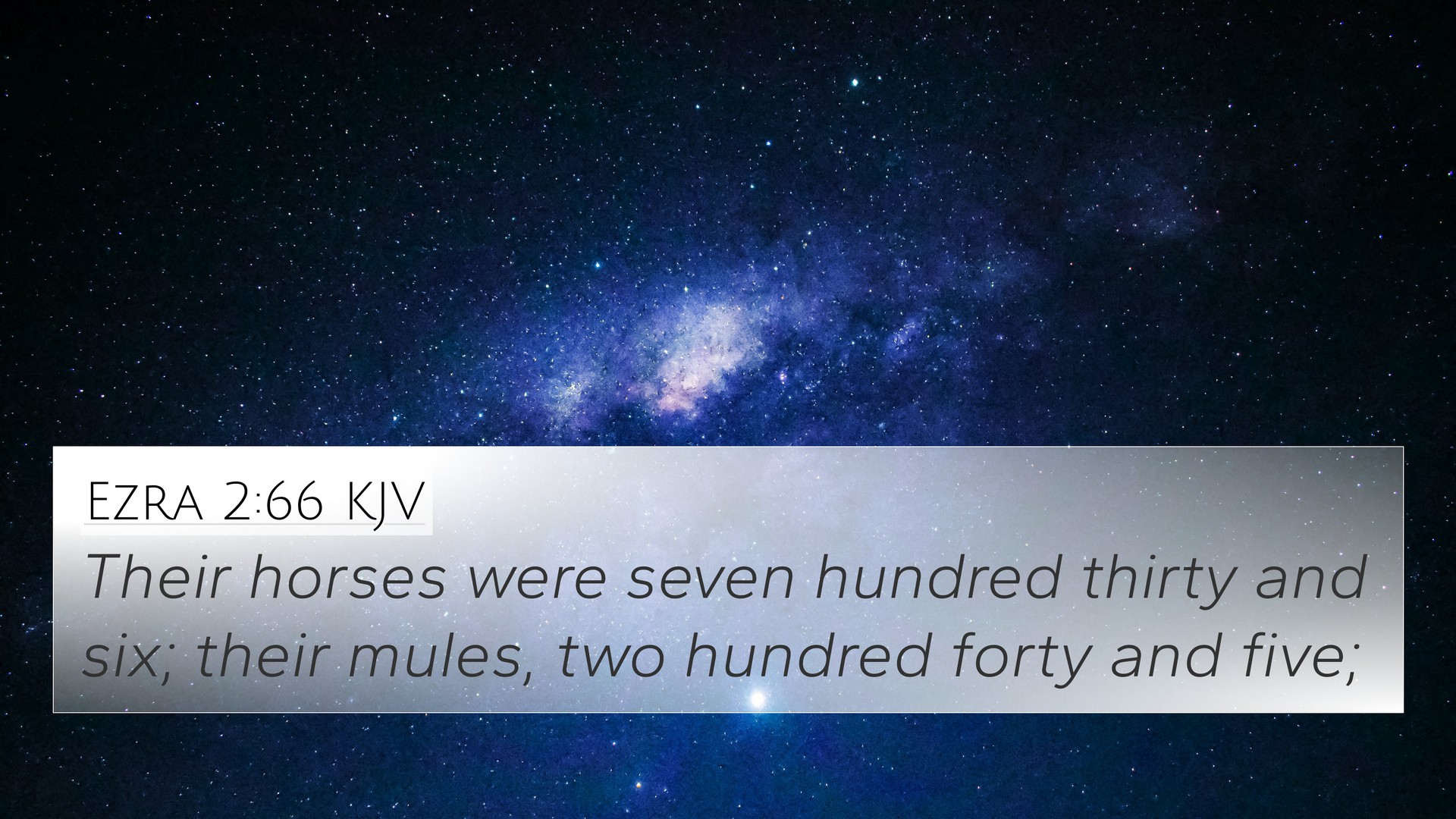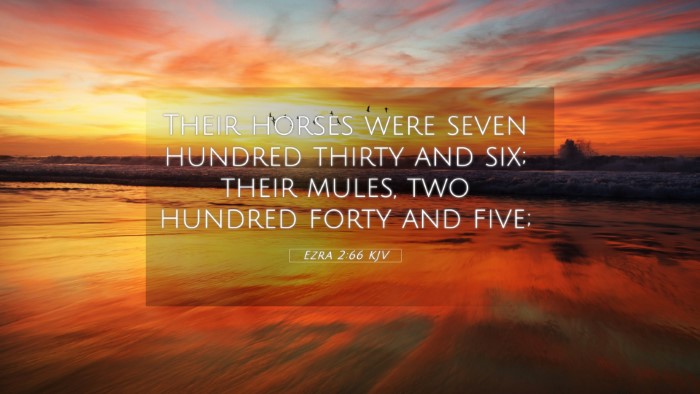Understanding Ezra 2:66
The verse Ezra 2:66 states:
"The whole congregation together was forty and two thousand three hundred and threescore," (Ezra 2:66).
Meaning and Insights
This verse offers a critical insight into the numbers that returned to Jerusalem after the Babylonian Exile. The total of 42,360 men signifies not only a significant population but also the revival of God's people. In combining insights from various public domain commentaries, we can derive profound meaning:
-
Matthew Henry:
Henry emphasizes the importance of this numerical accounting as a sign of God’s faithfulness. The very fact that a group emerged from exile to reclaim their homeland demonstrates the fulfillment of God’s promise to restore Israel. He notes that the numbers reflect not just a community returning but also a re-establishment of worship and identity in Jerusalem.
-
Albert Barnes:
Barnes highlights that the list of returning exiles was vital for the re-establishment of order and organization in the new community. The accuracy in numbers would later play a role in issues of land inheritance and priestly duties, facilitating a renewed relationship with God through proper structure and leadership.
-
Adam Clarke:
Clarke points to the collective nature of this return, stressing unity among the people. This reflects a community effort towards restoration, and the numerical total serves as a reminder of gathered strength as they embark on their endeavor to rebuild. Clarke additionally notes the importance of such historical data in understanding the timeline of Israel's restoration.
Cross-References Related to Ezra 2:66
The following are vital Bible verse cross-references that enhance our understanding of Ezra 2:66:
- Nehemiah 7:66-67: Similar listings and counting of the people who returned serve to authenticate the data in Ezra.
- Jeremiah 29:10: This verse illustrates the promise that God would bring His people back after 70 years, echoing the fulfillment seen in Ezra's narrative.
- Isaiah 44:28: Prophecy about Cyrus allowing the Jews to return resonates with the historical context of this return.
- Haggai 1:1-2: Establishes the prophetic voice during this period as they sought to rebuild their life and worship.
- Ezra 1:5-6: Shows the initial response and gathering of those willing to return, setting the scene for the detailed accounts that follow.
- Ezra 7:1-10: Further developments and the importance of Ezra, reinforcing the leadership role in the return.
- Psalms 126:1: A celebratory context after returning from captivity reminds the people of their restoring joy.
- Luke 2:36-38: References God's faithfulness through another return, connecting the theme across the Testaments.
- Hebrews 11:13: Reminds believers of faith in God's promises for a homeland and a future, uniting themes of exile and return across scripture.
- 2 Chronicles 36:22-23: This parallel track in history grants context for the events following Babylonian captivity.
Thematic Connections
The number of returnees is not merely statistical but intertwines with numerous biblical themes and prophecies:
- Restoration: God's promise of restoring Israel is a recurring theme throughout the scriptures, culminating in the events of Ezra.
- Identity: The returning exiles signify the reclaiming of their identity as God's chosen people, essential for their relationship with Him.
- Community: The return was marked by communal effort, echoing Acts 2 when the New Testament church began gathering together.
- Faithfulness: God’s faithfulness through trials signifies His overarching narrative across both the Old and New Testaments.
- Hope: The promise of returning home instills a renewed hope similar to the New Testament teachings regarding eternal life.
Conclusion
Ezra 2:66, as seen through the lens of multiple commentaries, not only details a remarkable event of restoration but also embodies larger theological principles of God's promise, community, and faithfulness throughout scripture.
The verse acts as a bridge connecting various theological themes across both the Old and New Testaments, calling us to engage in a deeper study of scripture.


